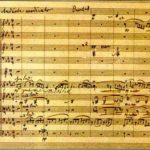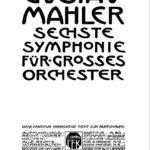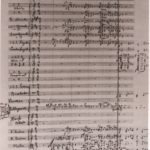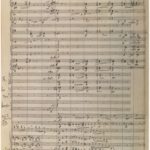
The Symphony No. 6 in A minor by Gustav Mahler, sometimes referred to as the Tragische ("Tragic"), was composed between 1903 and 1904 (rev. 1906; scoring repeatedly revised). The work's first performance was in Essen on 27-05-1906, and was conducted by the Gustav Mahler. The tragic, even nihilistic, ending ...

The scherzo marks a return to the unrelenting march rhythms of the first movement, though in a 'triple-time' metrical context. Its trio (the middle section), marked Altväterisch ('old-fashioned'), is rhythmically irregular (4/8 switching to 3/8 and 3/4) and of a somewhat gentler character. According to Alma Mahler, in this ...

Woodwind
- 1 Bass clarinet A. Solo in Movement 1: Allegro energico, ma non troppo and Movement 4: Finale (Allegro moderato).
- 1 Bass clarinet Bb. Solo in Movement 1: Allegro energico, ma non troppo and Movement 4: Finale (Allegro moderato).
- 4 Bassoon.
- 3 Clarinet A.
- 3 Clarinet Bb.
- 3 Clarinet Eb.
- 1 Contra bassoon.
- 3 Cor Anglais ...




